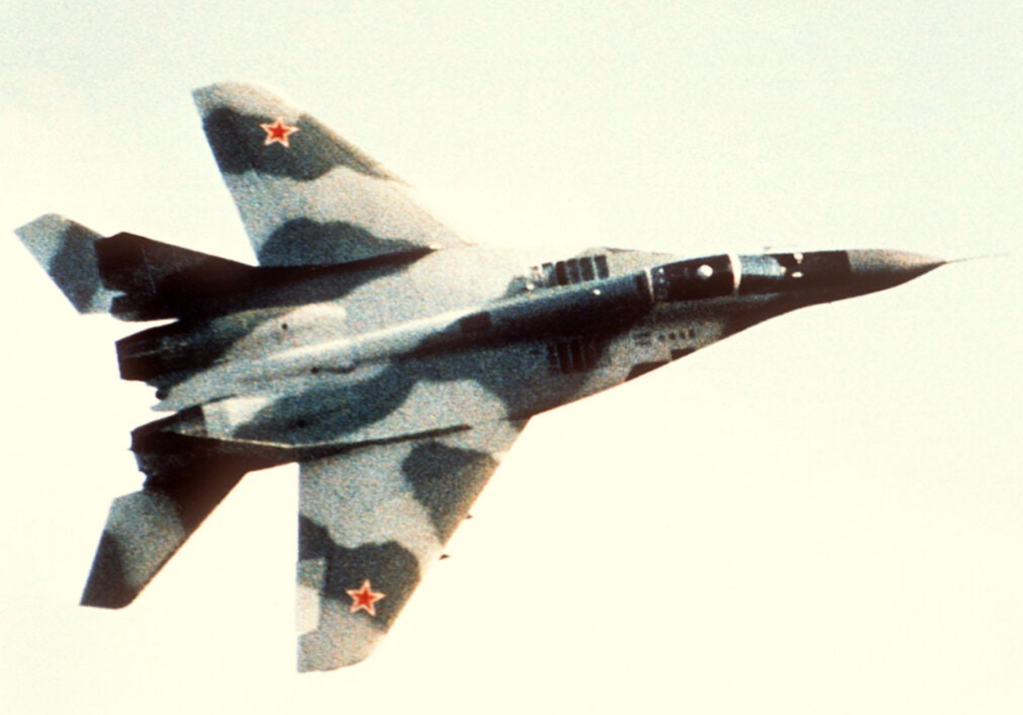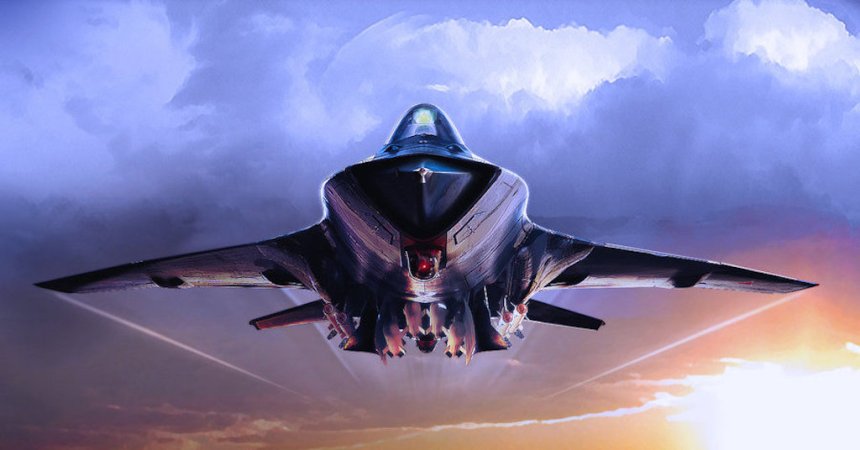During the Cold War, NATO and the Warsaw Pact countries were constantly trying to outdo each other. This arms race can be seen in their respective developments of a fighter jet. While the US developed the small and agile F-16 Fighting Falcon, the Soviet Union had the MiG-29. So how did this Soviet dogfighter end up flying for NATO? Unlike Chuck Yeager’s MiG-15, it wasn’t stolen.
Given the NATO reporting name Fulcrum, the Mikoyan MiG-29 was the Soviet Union’s counter to the F-16. Small, fast, and maneuverable, the MiG-29 would be a serious threat to NATO air superiority if the Cold War ever heated up. However, the Fulcrum’s performance compared to its NATO adversaries was purely academic until it could go head to head with them.
In 1988, East Germany purchased 24 MiG-29s from the Soviet Union. This was not unusual since the Soviets were the primary military supplier to communist Germany. However, following the fall of the Berlin Wall in November 1989 and the reunification of Germany in October 1990, the Fulcrums and all other East German aircraft were integrated into the West German Luftwaffe.

In April 1991, the MiG-29s were made NATO-compatible and the two formerly East German squadrons that flew them were reorganized into a MiG-29 test wing. In 1993, the test wing was reorganized again; this time into a fighter wing designated JG73 “Steinhoff.” They were stationed at Laage Fliegerhorst near Rostock in June.
During their NATO service, the MiG-29s were pitted against western aircraft in joint dissimilar air combat training exercises. The goal of these exercises was to see how NATO aircraft fared against a top-of-the-line Eastern Bloc plane. It was soon discovered that defense analyst claims of the MiG-29 being a serious threat to NATO were partially true.

First, the MiG-29 is fast. “The MiG-29 is a rocket,” Luftwaffe Oberstleutnant Johannes Rudolf told MiGFlug. It had a top speed of Mach 2.25 compared to the Block 50 F-16’s top speed of Mach 2.05. Living up to its NATO name, the Fulcrum also had an incredible turn rate. Whereas the Block 50 F-16 of the time had a turn rate of 26°/sec thanks to its state-of-the-art fly-by-wire system, the MiG-29 boasted a neck-breaking 28°/sec turn rate despite being manually controlled.
Additionally, Vympel R-73 Archer dogfight missile system on the MiG was superior to the NATO AIM-9 Sidewinder of the time. Able to target 45° off boresight and paired with a helmet mounted sight (another feature that NATO fighters lacked at the time) and infrared search and track sensors, the Fulcrum was superior in a dogfight to all US 4th generation fighters including the F-14 Tomcat, F-15 Eagle, F-16 Falcon, and F/A-18 Hornet. “Inside 10 nautical miles I’m hard to defeat,” Luftwaffe Oberstleutnant Johann Koeck told MiGFlug. “With the IRST, helmet sight and ‘Archer’ I can’t be beaten. Period.”

However, beyond visual range, the MiG-29 suffered against NATO aircraft. Its radar was not as advanced and its medium-range Vympel R-27 Alamo missile was inferior to the AIM-120 AMRAAM which boasted a longer range and superior search and track capabilities. The Fulcrum also had a low fuel capacity, thirsty engines, and no mid-air refueling probe. After the DACT exercises, German pilots also noted that American pilots had the advantage in both night and adverse weather conditions. The reunified Luftwaffe concluded that their NATO-integrated MiG-29s served best as point defense interceptors over cities and military bases.
Notably, Germany decided against sending the Fulcrums to Kosovo during Operation Allied Force. Even if they had been sent, German pilots reported that they would have been hindered by the MiG-29’s lack of more advanced NATO-specific communication tools and IFF systems that could not be fitted to the Soviet-designed fighter.

Of the 24 MiG-29s purchased by East Germany, only one was lost to pilot error during an accident on June 25, 1996. By 2003, the Fulcrums had amassed a total of 30,000 combined flight hours. In September of that year, 22 of the aircraft were sold to the Polish Air Force for a symbolic 1 euro apiece where they continue to fly for NATO. The 23rd German MiG-29 was put on display at Laage.










